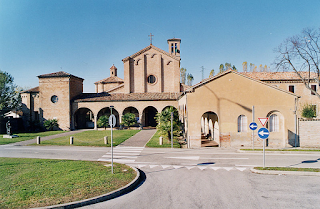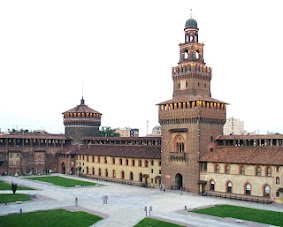Giacomo Matteotti - martyr of freedom
Politician kidnapped and murdered by Fascist thugs
A brave and historic speech made in the Italian parliament on this day in 1924 marked the start of a crisis for Benito Mussolini's Fascist government. The young socialist politician who delivered the speech, denouncing the Fascist victory in the general election held in April of that year as having been won through fraud and violence, was subsequently kidnapped and murdered. Giacomo Matteotti, the 29-year-old founder and leader of the Unified Socialist Party, accused Mussolini's party of employing thugs to intimidate the public into voting Fascist and said that changes to electoral law were inherently corrupt in that they were framed to make a Mussolini government almost inevitable. Matteotti, who had already written a controversial book about the Fascists' rise to power, knew the risk he took in making the speech and is said to have told colleagues they should "get ready to hold a wake for me" as they offered him their congratulations. Less than two weeks later, on June 10, Matteotti was walking along the banks of the River Tiber close to his home in Rome when he was attacked by five or six assailants who beat him up and bundled him into a car. Read more…
______________________________________
Andrea Verga - anatomist and neurologist
Professor among founding fathers of Italian psychiatry
The anatomist and neurologist Andrea Verga, who was one of the first Italian doctors to carry out serious research into mental illness, was born on this day in 1811 in Treviglio in Lombardy. Verga’s career was notable for his pioneering study of the criminally insane, for some of the first research into acrophobia - the fear of heights - which was a condition from which he suffered, and for the earliest known experiments in the therapeutic use of cannabis. For a number of years, he held the post of Professor of Psychiatry at the Ospedale Maggiore in Milan. He also founded, in conjunction with another physician, Serafino Biffi, the Italian Archives for Nervous Disease and Mental Illness, a periodical in which research findings could be shared and discussed. Verga also acquired an in-depth knowledge of the anatomy of the bone system and the nervous system, and was the first to identify an anomaly of the brain that occurs in only one in six people, which became known as ‘Verga’s ventricle’. The son of a coachman, Verga was an enthusiastic student of classics whom his parents encouraged to pursue a career in the church, yet it was medicine that became his calling. Read more…
____________________________________
General Giulio Douhet - military strategist
Army commander was one of first to see potential of air power
The Italian Army general Giulio Douhet, who saw the military potential in aircraft long before others did, was born in Caserta, north of Naples, on this day in 1869. With the arrival of airships and then fixed-wing aircraft in Italy, Douhet recognized the military potential of the new technology. He advocated the creation of a separate air arm commanded by airmen rather than by commanders on the ground. From 1912 to 1915 Douhet served as commander of the Aeronautical Battalion, Italy’s first aviation unit. Largely because of Douhet, the three-engine Caproni bomber - designed by the young aircraft engineer Gianni Caproni - was ready for use by the time Italy entered the First World War. His severe criticism of Italy’s conduct of the war, however, resulted in his court-martial and imprisonment. Only after a review of Italy’s catastrophic defeat in 1917 in the Battle of Caporetto was it decided that his criticisms had been justified and his conviction reversed. Born into a family of Savoyard exiles who had migrated to Campania after the cession of Savoy to France, Douhet attended the Military Academy of Modena and was commissioned into the artillery of the Italian Army in 1882. Read more…
______________________________________
Giovanni Gentile – philosopher
The principal intellectual spokesman for Fascism
Giovanni Gentile, a major figure in Italian idealist philosophy, was born on this day in 1875 in Castelvetrano in Sicily. Known as ‘the philosopher of Fascism’, Gentile was the ghostwriter of part of Benito Mussolini’s The Doctrine of Fascism in 1932. His own ‘actual idealism’ was strongly influenced by the German philosopher, Georg Hegel. Gentile's rejection of individualism and acceptance of collectivism helped him justify the totalitarian element of Fascism. After a series of university appointments, Gentile became professor of the history of philosophy at the University of Rome in 1917. While writing The Philosophy of Marx – La filosofia di Marx – a Hegelian examination of Karl Marx’s ideas, he met writer and philosopher Benedetto Croce. The two men became friends and co-editors of the periodical La Critica until 1924, when a lasting disagreement occurred over Gentile’s embrace of Fascism. Gentile was Minister of Education in the Fascist government of Italy from October 1922 to July 1924 carrying out wide reforms, which had a lasting impact on Italian education. Read more…
.jpg)



.jpg)






.jpg)


.jpg)
.jpg)

